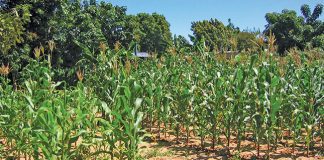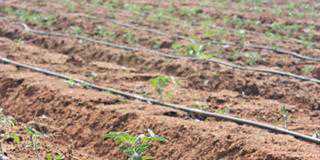After over 20 years of intensive production, KZN farmer Gary Fyvie noticed that some of his vegetable blocks were looking rather tired, and the soil had become run down. So he devised a plan to give his soil a well-deserved break from the daily grind.Central to this was the use of green manure crops, grown to contribute organic carbon and lay the foundation for revitalised soil and healthier crops.
He’s been incorporating them for the past four years.Gary and his father Ian farm on three farms totalling about 320ha at Ingomankulu between Pietermaritzburg and Durban. They have 63ha under macadamias and 160ha under sugarcane, but their main breadwinner is vegetables and 50ha to 80ha will be under cabbage, potatoes, cauliflower, broccoli, sweetcorn and peppers at any given time.
A rotation system
Gary’s crop rotation system rests every block under a green manure crop once every four years. This ensures that only 6,25% of his income-generating land is under green manure at any given time. He also recently bought a neighbouring 160ha sugarcane farm to incorporate into the rotation schedule. “The idea is to grow sugarcane on a block for eight years, and then switch to vegetables for two,” explains Gary.
“It will be better for vegetable production and cane does very well after vegetables.” Green manuring has helped Gary overcome a number of challenges, including soil compaction, depleted soil and weeds. “We had a lot of compaction,” he recalls. “Clods were hard and we had to water the soil to break them down. But incorporating a green manure crop into the soil made it friable and gave us a good seed bed.”
Choosing cover crops
Guided by Simon Hodgson from KZN Hybrid Seeds, the Fyvies use mainly forage sorghum, sunn hemp and oats as cover crops. Oats and grazing vetch offer grazing possibilities, which appeals to Gary as he runs a small herd of cattle. “We sometimes graze the cattle on green manure crops such as oats. Once grazed down, the oats is either left to grow out and then mowed and incorporated into the soil to feed the microbes; or they’re burnt to suppress weeds.”
Oats is planted before peppers specifically to suppress weeds. “Peppers take a long time to canopy, so weeds can be a problem,” says Gary. “Growing and burning off oats first will leave a mulch to suppress weeds until the canopy has formed.” Burnt oats will provide about 10t/ha of wet matter, which gives about 2,5t dry matter. This mulch protects the soil surface, slowing rain drops and the flow of water through and over the soil, and reducing water run-off and nutrient leaching. More organic matter also improves soil structure, infiltration and water-holding capacity.
Gary grows sun hemp and forage sorghum between his macadamia trees. His oldest trees are only seven years old and are just coming into full production. “This orchard is on old vegetable lands, so the soil was very depleted and weeds were a problem,” says Gary. “We planted sunn hemp to fix nitrogen, and forage sorghum mulch to smother weeds. The trees are visibly healthier in the orchards where we’ve grown these cover crops.”
Realistic expectations
Cover crops don’t yield the immediate results of chemical fertiliser. It takes 90 days before they can be incorporated into the soil, and the residues then have to be processed by microbes. It requires a change of mindset and the patience to wait for nature to do its thing.
While cover crops aren’t miracle crops, with persistence and planning they will enhance soils. While it is possible to calculate the monetary value of the nutrients cover crops put back in the soil, and the savings made by reducing herbicide applications, these aren’t the main aims. “Cover crops are a soil rehabilitation programme, not a cost-saving mechanism,” Gary concludes. “I get a better result, and I’ll continue to grow them.”
Contact Gary Fyvie on 082 553 7685 or e-mail [email protected]. Contact Simon Hodgson on 031 785 1581 or
e-mail [email protected].













